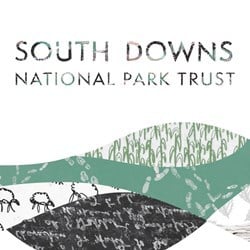
Become the
first donor!
- About
Despite being known for its chalk grassland, the South Downs is one of the most wooded National Parks with its Hampshire Hangers and the Kingley Vale Yew Forest which is home to a number of ancient yew trees which are amongst the oldest living things in the country. However, a significant proportion of our trees are under threat from disease with 2 species in particular forecast to suffer from significant decline in the coming years.
Ash - It is widely anticipated that ash dieback (also known as chalara) will result in the loss of approximately 95% of this species in the next 10 years. It has been estimated by the Forestry Commission that ash makes up around 19% of the woodland canopy in the South Downs. This disease will therefore result in the loss of around 1 in 5 trees in the National Park.
Elm - Dutch elm disease is one of the most serious tree diseases in the world. It has killed over 60 million british elms in two epidemics and it continues to spread today.
Whilst at risk, the south Downs is still home to a significant number of elm trees. Many species rely on these trees for food and shelter. For example, the white-letter hairstreak butterfly has declined by 53% since teh 1970's.
Whilst there are a number of existing funds for tree replanting, for example through the Forestry Commission or the Woodland Trust, many of these schemes promote the planting of non-native trees (such as eucalyptus) and tend to focus on woodlands.
The result is that many of our public trees, those found in parks, along walking routes and lining our streets, are not not eligible.
There is a significant risk that these trees will not be replaced and if they are, that it would be with an exotic species which will contribute to a further loss of our historic habitat.
We want to work with farmers, landowners and other organisations to plant 5,000 trees within the South Downs. Importantly, this fund will be delivered within "the right tree in the right place" policy to enhance the natural heritage of the National Park.
20% of the trees that we will replant will be disease resistant elms which have suffered a massive decline in numbers. This will help restore our visual and natural heritage and protect our indigenous biodiversity.
We are seeking £61,500 to purchase 5000 trees along with stakes, guards and ID tags.
We will work with a variety of partners including the National Park Authority and their networks of farmers, landowners and environmental organisations.


